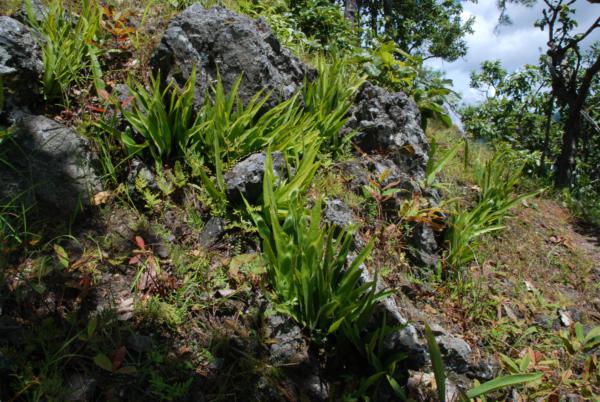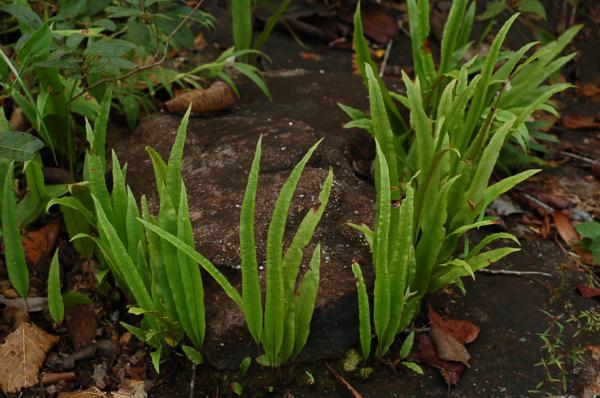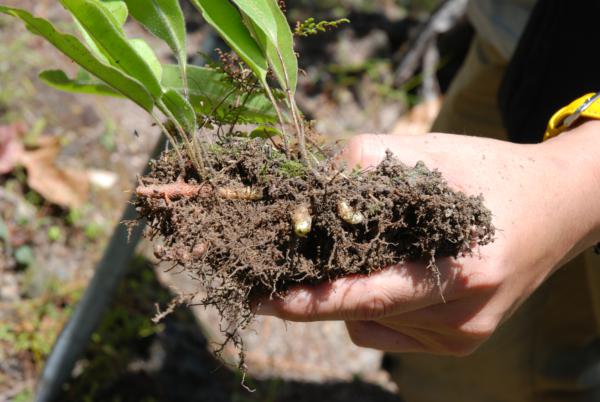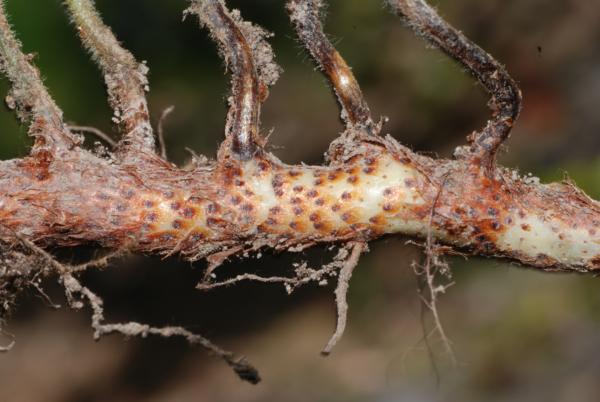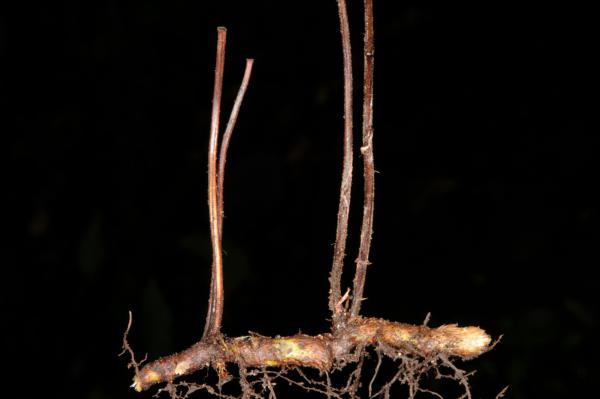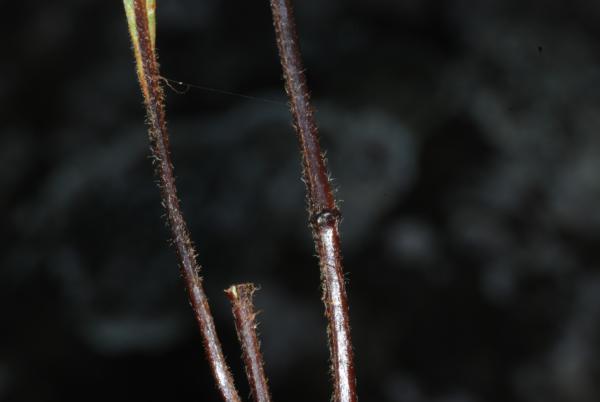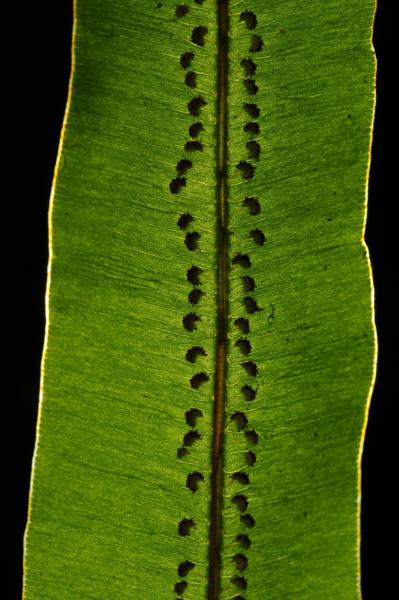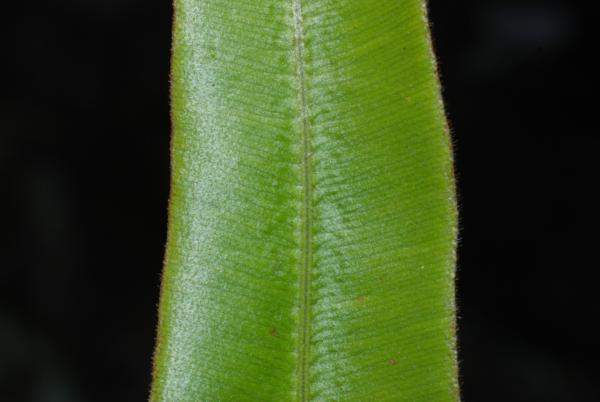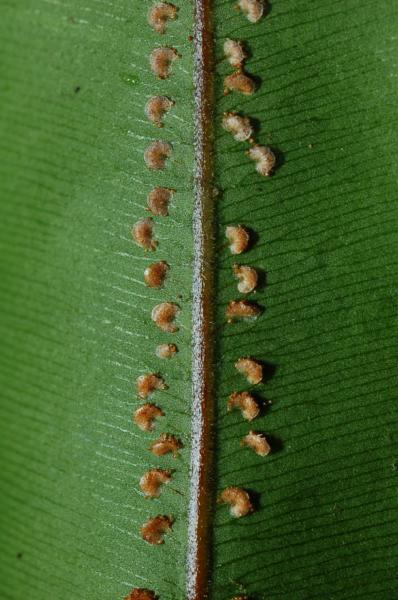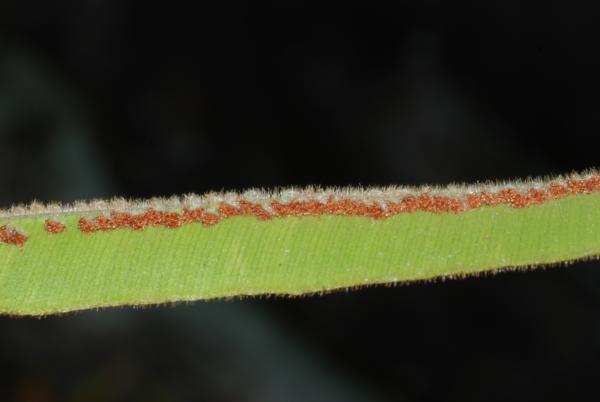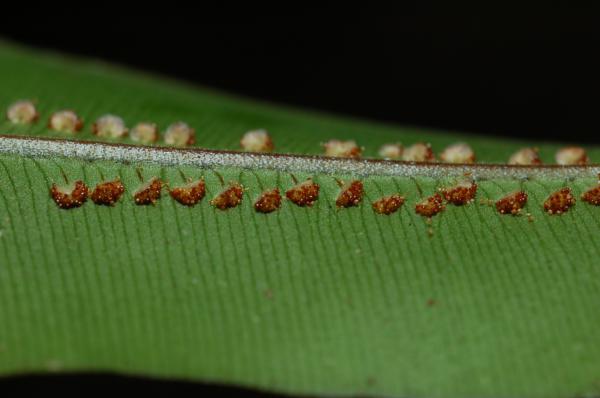
Oleandra undulata (Willd.) Ching
Family
Oleandraceae
Nomenclature
Oleandra undulata (Willd.) Ching, Lingnan Sci. J. 12: 565. 1933; Tardieu & C.Chr., Fl. Indo-Chine 7(2): 286, f. 30.1 & 30.2. 1940; Holttum, Rev. Fl. Malaya ed. 1, 2: 384, f. 223. 1955 [‘1954’]; Holttum, Dansk Bot. Ark. 20: 26. 1961; Holttum, Dansk Bot. Ark. 23: 235. 1965; Ching, Fl. Reipubl. Popularis Sin. 2: 322, pl. 29, f. 1–4. 1959; Tagawa & K.Iwats., SouthE. Asian Stud. 5: 78. 1967; Tagawa & K.Iwats., Fl. Thailand 3: 180. 1985; Boonkerd & Pollawatn, Pterid. Thailand: 239. 2000. – Polypodium undulatum Willd., Sp. Pl. 5: 155. 1810.
Oleandra cumingii Hook. & Baker, Syn. Fil.: 303. 1867; Bedd., Handb. Ferns Brit. India: 288. 1883.
Oleandra pubescens Copel., Univ. Calif. Publ. Bot. 12: 397, pl. 52–a. 1931.
Description
Rhizome long creeping, 3–5 mm diam., bearing distant fronds, or rather closely on some portions, densely scaly throughout; scales appressed, oblong, round to moderately acute at basal edge, acuminate at apical edge, up to 7 by 1.3 mm, entire, brown, dark near attached points, long downy hairy. Fronds simple. Stipes on tall phyllopodia 1.5–12 cm high, stramineous, hairy, up to 20 cm or more long including phyllopodium. Laminae narrowly lanceolate, gradually narrowing towards both ends, up to 30 by 4.5 cm, the margin entire but more or less undulate, herbaceous to softly papyraceous; veins once or twice forked near midribs, densely hairy beneath, glabrous to densely hairy above, glabrous to densely hairy at margin of lamina. Sori in one regular row close to costa or rather irregularly arranged near costa, dorsal on acroscopic veinlets; indusia up to 2.2 mm broad, hirsute or glabrescent .
Distribution in Thailand
NORTHERN: Chiang Mai, Chiang Rai, Lampang, Phrae; NORTH-EASTERN: Loei; EASTERN: Chaiyaphum, Ubon Ratchathani; SOUTH-WESTERN: Kanchanaburi; SOUTH-EASTERN: Chanthaburi, Trat; PENINSULAR: Ranong, Phangnga, Krabi, Nakhon Si Thammarat.
Distribution in Laos
Champasak.
Distribution in Cambodia
Kompong Speu.
Wider Distribution
Burma and S China to Peninsular Malaysia.
Ecology
The habitats of this species are varied according to the localities: terrestrial on rather dry, slopes in mixed forests, growing in crevices of rocks in open areas or in light shade, or on limestone hills in evergreen forests, or epiphytic on tree trunks.
Proposed IUCN Conservation Assessment
Least Concern (LC). This species is widespread and not under any known threat.
Voucher specimens - Thailand
Middleton et al. 4932, Chiang Mai, Road to Ban Ung from Ban Mae Na Chon (E); Middleton et al. 5182, Ubon Ratchathani, Phu Chong Nayoi National Park (E).
Voucher specimens - Laos
Maxwell 97-1082, Champasak (CMU); Thorel 2467, Champasak, Kong (P).
Habit
Habit
Underground rhizome
Rhizome
Rhizome and long phyllopodia
Articulation between phyllopodia and stipes
Venation
Upper surface of lamina
Lower surface of lamina and sori
Lower surface of lamina from the side
Sori
Site hosted by the Royal Botanic Garden Edinburgh. Content managed by Stuart Lindsay, Gardens by the Bay, Singapore and David Middleton, Singapore Botanic Gardens. Last updated 24 January 2012
